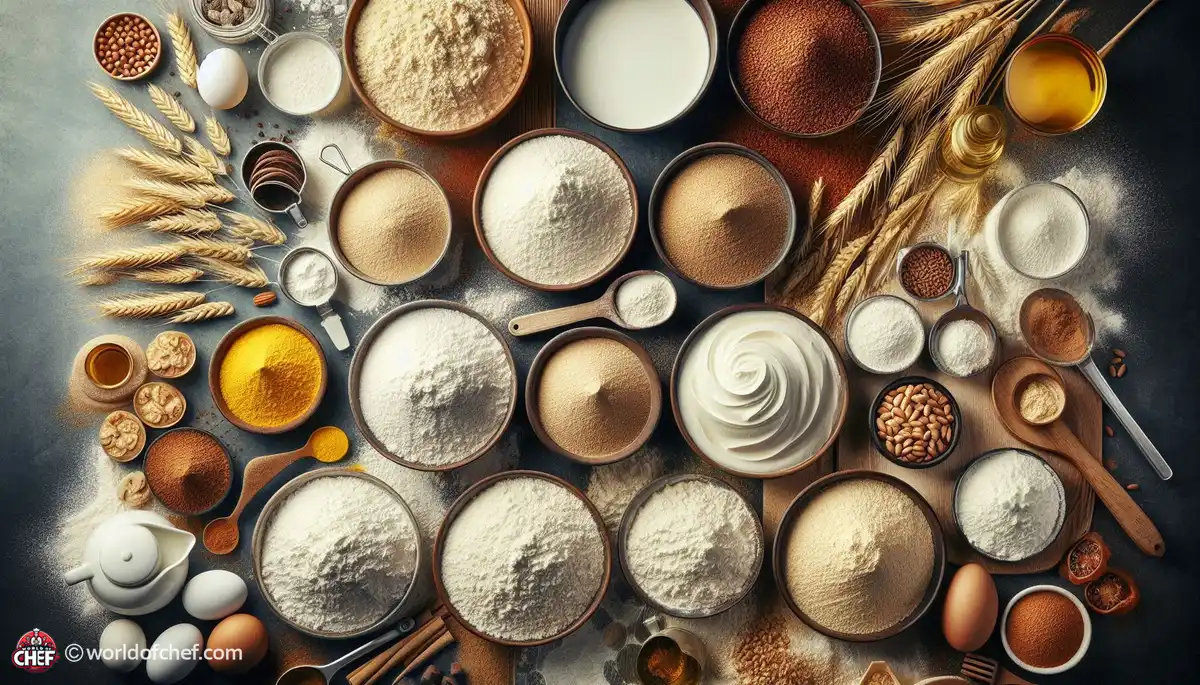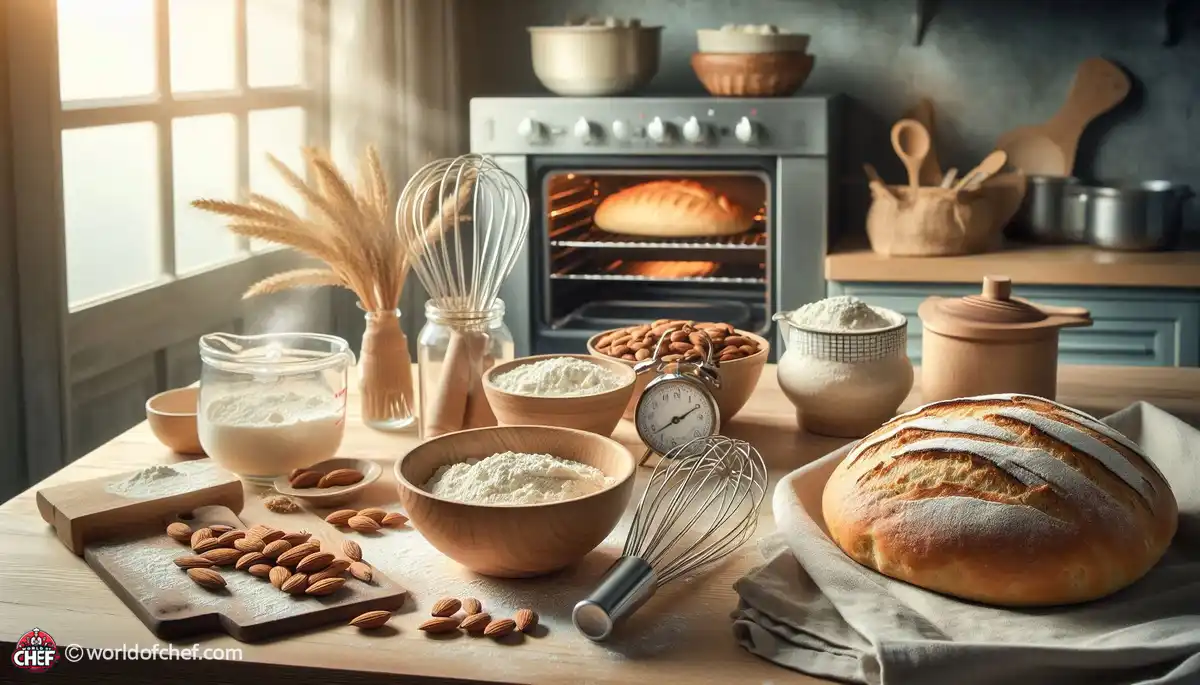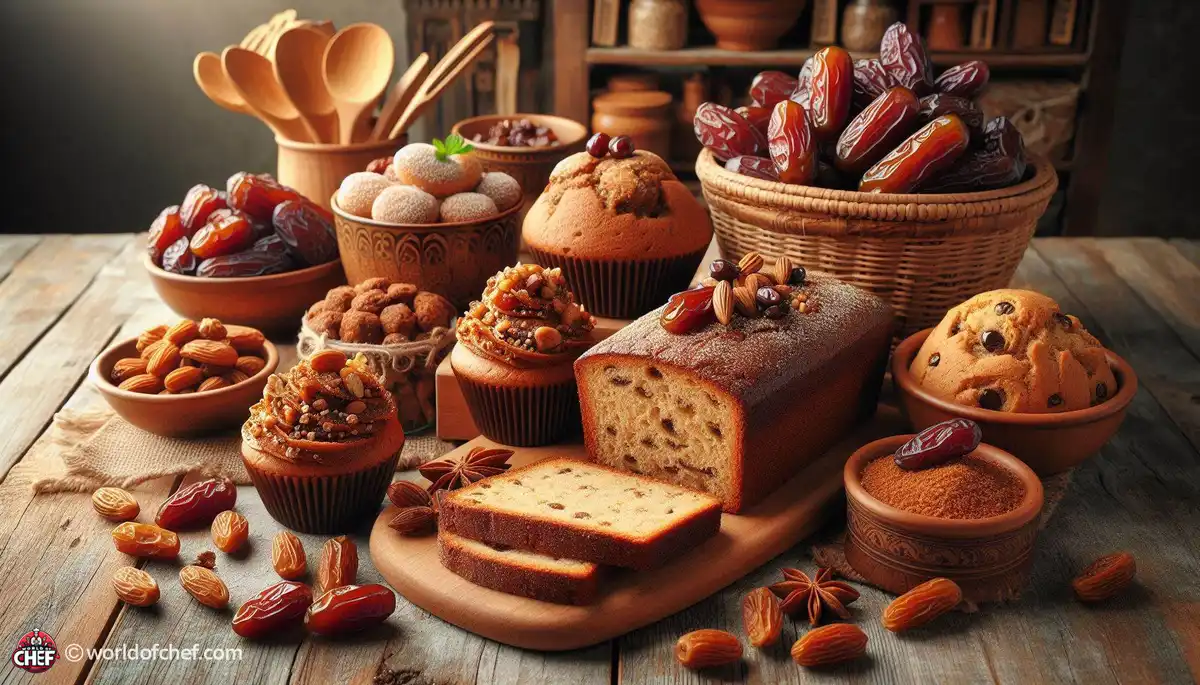
Understanding Oven Hot Spots and How to Bake Around Them
Russell Comeaux - Mar 30, 2025 - 13 min read


Flour is the ingredient that everyone uses daily, constituting the main staple in their daily recipes. Not all types of flour are similar in properties; they offer varied characteristics, and with knowledge of their differences, a person's baking or cooking will take it to new heights every time they're in the kitchen. Flour type is crucial to various foods, so here are a few you can apply based on what you intend to make.
Flour is a powdered result of ground raw grains, seeds, or roots. While we have the notion that it must be wheat flour, technically, the origins could have been various sources. Among the widely used, we have wheat flour, a product made from different species of wheat and their potential texture ranging from soft to hard. Grinding varies to produce coarser or finer flour. This simple basic ingredient forms the basis of so much baked goods for structure and texture.
Besides wheat, there is flours derived from rice, corn, and even nuts. These flours are not only used as thickeners but also gluten-free for people with dietary restrictions. Flour is so versatile that creativity in the kitchen is allowed, and it opens doors to different culinary traditions. Knowing the composition of these flours can greatly improve your cooking and baking experience.
It is the protein in wheat flour that gives dough elasticity and the capacity to rise. Gluten proteins come together in a network in water when baked, trapping the air bubbles, and that is why high-gluten flour-based breads tend to be chewy and structured, while cakes tend to be light and tender with low-gluten flour.
Various sources of gluten-free flour are available, mainly for those persons with gluten sensitivity or intolerance. Such substitutes can form a simulacrum of gluten functionalities, but usually must be supplemented to obtain equal texture. Understanding how gluten works may help you make correct choices according to your requirement from the recipe and any bias you might have towards what you eat.
Flour differs in nutritional content with various types and processing. Whole grain flours retain the bran and germ of the grain, making them rich in fiber, vitamins, and minerals. The refined ones stripped off such contents tend to be lower on nutrients. For those seeking a balanced diet, it becomes an important difference.
Choose the flour that fits your dietary needs. In case you want added fiber and nutrients, you might want to use whole grain varieties. On the other hand, light-textured baked products may need more refined flours. Understanding the differences will help you make the right choice when it comes to your flour for healthy and tasty baked products.
All-purpose flour is versatile to the extent that any general baker, even within one's kitchen, needs for various cookie and pancake recipes. The proteins lie within a range from 10% to 12%. As a result of its protein range, one can have both very delicate baked products and quite robust products like bread. Hence it's so commonly sought for home use.
Although all-purpose flour works well in a wide range of applications, specialty recipes may not always achieve the best results. Bread makers might prefer a higher protein flour for better texture and rise, while cake bakers would probably prefer a lower protein flour. However, all-purpose flour is a staple since it is convenient and works satisfactorily in most cases.
All-purpose flour is a very general-purpose flour, which replaces a lot of other types of flour but can have different textures slightly. So little experimenting would be needed, however, the balance in the amount of gluten forming proteins makes this flour always reliable when bakes are made and for sauce thickeners as well as pasta production.
Bread flour is made specifically for yeast-based recipes, as it contains a higher amount of protein (around 12% to 14%). This additional protein provides a stronger gluten network to trap air and make the bread rise properly. You will get that perfect loaf of sourdough or that fluffy pizza crust if you use bread flour.
Using bread flour also tends to make baked goods chewy. This is the reason why artisan bread, bagels, and such other heavy creations are loved. However, it might not be suitable for the fragile pastry, but bread flour adds a new dimension to your skills and gives great textured products.
If you do not have bread flour, you can make a substitute by mixing all-purpose flour with a little vital wheat gluten. This way, you can control the protein level to suit your recipe requirements so that you will still be able to get a good rise and structure in your bread.
Cake flour is finely milled, low in protein, about 7% to 9%. It is made to be used in producing light, tender cakes. Its specific composition leads to a delicate crumb and fine texture that is perfect for recipes you want to have soft and airy, such as angel food cake or chiffon cake.
The low protein content contributes to less gluten formation, that is very important for making a cake that melts into your mouth as good cake does. It is appropriate if you want to develop moist interior cakes with crumb softness. However, it is also highly used in cookies and even muffins for the very same reasons.
You can always mix a recipe with all-purpose flour and change the amount of liquid added as whole wheat flour tends to soak liquid differently. That slight modification is what's going to help you end up with what you wanted the finished goods to be in the first place.
Because made directly from the whole grain, retaining its bran, germ, and endosperm, whole wheat flour is definitely richer in fiber, vitamins, and minerals compared to the white variety. When making whole wheat bread or other preparations, expect denser nuttier flavors-they just make a difference to so many baked goods.
Substitution of whole wheat flour for all-purpose flour in recipes is technically possible but often requires adjustments in liquid levels and sometimes leavening agents. This is because of its higher absorption capacity that can cause a dry outcome if not balanced.
One good method of adding nutritional value is through the addition of whole wheat flour, especially to baked goods. You may also try substituting part of all-purpose flour with whole wheat flour for better fiber content while still achieving a good texture.
There are now various gluten-free flours that have come up with the increasing demand for such products. Some of the most common include almond flour, coconut flour, and rice flour, each carrying flavors and textures to be used in different recipes.
Almond flour is also high in protein and in good fats, so these items become moist and even more fleshy for your baked goods. The opposite goes for coconut flour-thus it absorbs like a sponge and often doubles or quadruples the amount of liquid in a given recipe, so it pays to learn about these details.
Substitution of gluten-free flours in recipes requires a highly disciplined approach, as gluten-free flours have completely different chemical properties than traditional wheat flours. Mixing various flours to provide the optimal texture and taste often perfects many recipes. Experiments often result in delicious innovations that cater to different diet requirements.
Specifical specialty flours, as rye, spelt and oat flour, bring out specific flavors and nutritional benefits. Rye flour can be quite strong in flavour and is mainly used with traditional breads. The spelt flour is considered an ancient grain and introduces a slightly nutty taste. It's often also easier to digest than many modern varieties of wheat.
Specialty flours add depth and character to your foods that simply don't exist with standard flours. However, most specialty flours require special handling and baking techniques in order to produce a good product. Rye flour, for instance, is lower in gluten and may require additional hydration.
Such delightful discoveries might come up in your baking while experimenting with specialty flours. If you aim for a hearty bread or simply want to make something totally new and unique, then this variety of flours may break you out of your monotony and bring excitement while baking.
The choice of flour has to be made considering what you are making, based on the requirements of that particular dish. So in order to make something where a lot of structure has to be given to the product, like bread and pizza, you have higher-protein flours; but for cakes and pastries, which you are seeking tenderness, lower protein works best. Thus it gets aligned with what is required for the end result: texture and flavor.
Consider the water content in your ingredients, too. Other recipes may require some adjustments in terms of liquids used, depending on the kind of flour you prefer. For instance, whole wheat tends to be more liquid-intensive compared to all-purpose, and it might need a bit more moisture to help get the mix right.
If you are experimenting with new flours, start by using recipes that have been especially designed for those types. This will get you thinking about how they operate and what adjustments might be necessary so that you can build trust in your work. Mixing Flours
Mixing different flours can bring out different textures and Flavor Profiles into the baked goods. As an example, mixing whole wheat flour with all-purpose flour produces a beautiful nutty taste while retaining much of the tenderness found in white flour. The technique is very good when you need to reap all the nutritional benefits of whole grains without sacrificing the texture.
The most common pairing is using bread flour for structure and cake flour for tenderness in a specific recipe, like a layered cake that still needs stability. This approach will balance the qualities of each flour for a well-rounded final product.
When you want to experiment with flour mixes, start with small batches as your way of determining how it would affect the texture and flavour. This process is liable to lead to tasty results and a better understanding about how different flours go to react in your baking.
Proper storage of flours will help in maintaining the freshness and quality of the flour. Flours absorb moisture from their surroundings and odors into their structures, hence maintaining them in airtight containers. For extended term storage, refrigerate or freeze flours, especially those that are whole grain as well as specialty ones for longer storage.
Always check the expired dates on flour packages, and when in doubt, perform a freshness test by smelling or tasting a small amount. If it has a rancid odor or taste, it's better to discard it. Proper storage will also ensure the quality preservation of your flour and improve the flavor aspect of your baked goods overall.
Keep the pantry well-organized. In that way, you can check on what you have at hand and how many are already expired so you do not waste time waiting for flours to go bad before using them. That would save you a lot of money and make your baked goods last long, making it possible for you to savor every minute of it.
There's only a very small portion that, unless you've used those same basic flours interchangeably many times before, one isn't sure where exactly they start and finish within. Most people only cook from three or four bases that really make their kitchens exciting-bread flour, all-purpose flour, cake flour, and even gluten-free ones to support the rest, when considering the scope in front of them.
The more you know about the properties of each type of flour, the better you will be at taking recipes and experimenting with techniques. This is where the fun lies in baking-to experiment and discover what works best for you.
All of these you put into your cooking and baking, and soon you'll find that your recipes are turning into delectable masterpieces. Flour is not an ingredient but the canvas on which your imagination in the kitchen plays its magic. Happy baking!

Russell Comeaux - Mar 30, 2025 - 13 min read

Alexis Larose - Mar 25, 2025 - 15 min read

Hailey Morrill - Mar 21, 2025 - 18 min read

Bobby McKelvey - Mar 18, 2025 - 12 min read